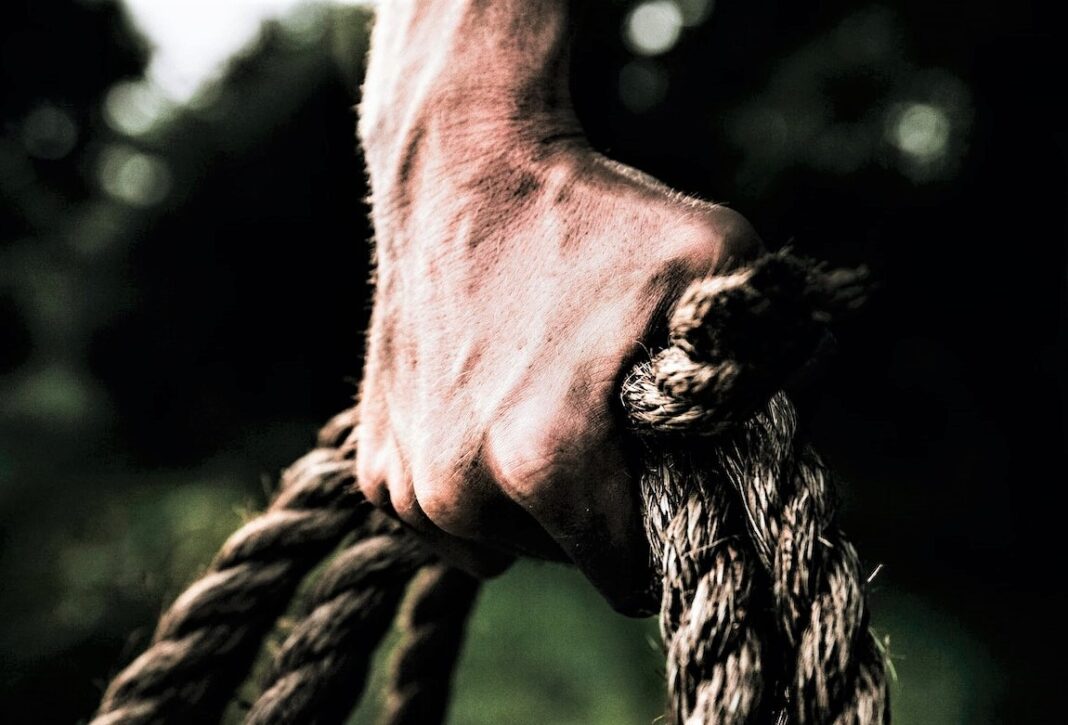What do these diverse activities have in common: rock climbing, golf, motocross, baseball, bull riding, and weight-training? In each, grip strength is crucial for success. In weight-training, your grip can make the difference between seven reps and 10, between pulling 225 and 275, or, to cut to the chase, between stagnation and growth. If your grip gives out before the targeted muscles do, you’re forced to end the set short, likely before stimulating muscle growth or additional strength. The Barbell examine the methods, exercises, and tools designed to help you hold on to bars longer and grasp greater gains.

TYPES OF GRIPS
Often the exercise dictates much about the grip you use. For example, a barbell curl is always done underhand, just as a reverse curl is always done overhand. In other exercises, such as rows, you can go either overhand or underhand, with each style altering the angle of the pulling motion and muscle stimulation. However, in either curls or rows, you may still chose to deviate by using, say, a thumbless grip instead of the standard closed grip.
These are the major grip styles.
OVERHAND (a.k.a. Pronated)
The palm is facing up while curling and forward when doing a pulldown or bench press.
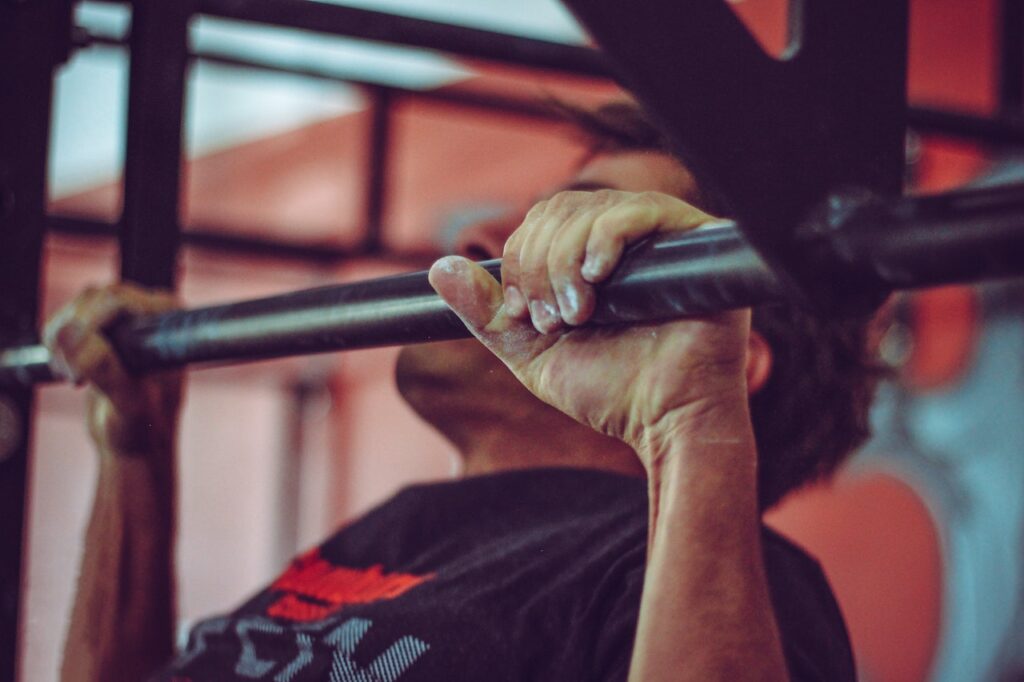
UNDERHAND (a.k.a. Supinated)
The palm is down while curling and backward during a pulldown or bench press.
PARRALLEL (a.k.a. Thumbs Up)
The palm faces your central axis. Both palms face each other if two hands are used at once.
MIXED (a.k.a. Staggered)
One hand is overhand and the other is underhand. This provides a more secure grip for deadlifts.
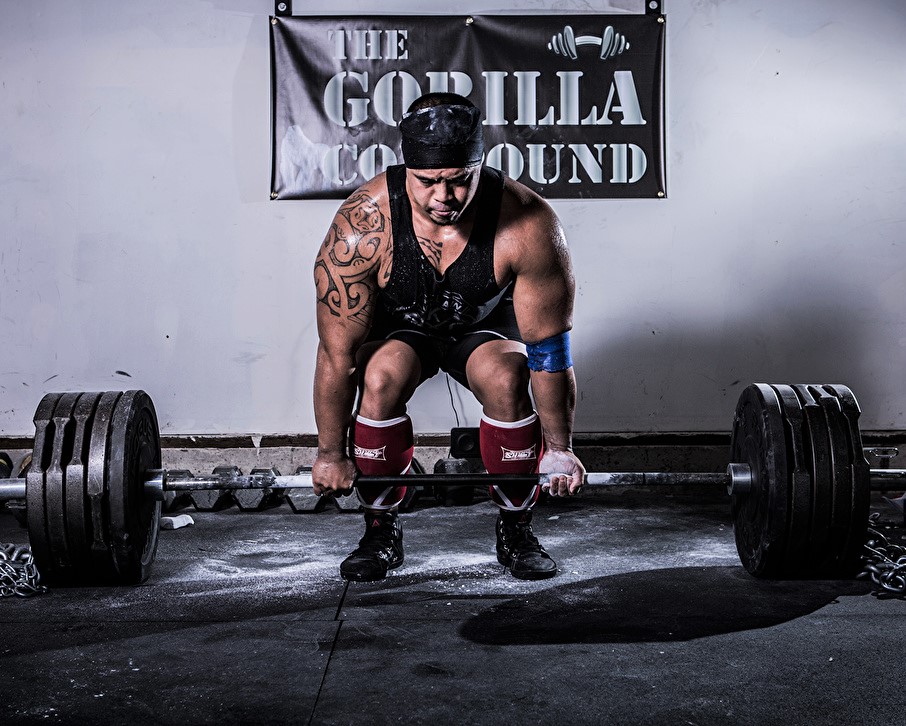
CLOSED
This is the standard method of finger placement with the thumb wrapped around the bar in the opposite direction of the fingers (thumb overhand if fingers are underhand, thumb underhand if fingers overhand) and positioned alongside the index finger.
THUMBLESS (a.k.a. False)
The thumb is in the same direction as the fingers. This is often favored in lifts like rows, pulldowns, and pushdowns. Some lifters use a thumbless grip on bench presses, but we recommend you avoid this, because the bar is more likely to slip from your palms,and the potential injury is great.
HOOK
In this variation of a closed grip, the thumb is angled inward on the bar and the index and middle finger are placed on top of it (and the bar); the other two fingers are wrapped around the bar as usual. The thumb works harder than in a closed or thumbless grip, and the index and middle finger apply pressure to both the thumb and the bar. This grip is favored by Olympic lifters. At first, it’ll probably feel both less secure and more painful, but with practice the thumb-finger interaction makes this a strong hold.
THUMB LOCK
With this variation of the hook grip, the end of the thumb is placed between the index and middle fingers. This can also be a more secure (and painful) grip.
REVERSE HOOK
In yet another variation of the hook, this time the thumb is over the index finger and squeezing against the middle finger. This is another potentially strong hold.
GRIP STRENGTH EXERCISES
Let’s first focus on four grip exercises you can do in any gym.
EXPANDED WRIST CURL
This is performed like a standard wrist curl with the crucial difference that at the bottom of each rep you uncurl your fingers enough so the bar rolls down to your fingers’ first joints. Roll your fingers back up, curling them around the bar again, and then complete the wrist flexion as usual. You won’t be able to use as much weight as a flexion-only wrist curl, but you’ll work your hands in conjunction with your forearms. Do four sets of 10-15 reps.
PINCH GRIP
Because the bar rolls down your fingers, expanded wrist curls don’t work your thumbs. The pinch grips does. Put two or more weight plates together so the smooth sides face out. (You can use, for examples, two 10s, two 10s and a 5, three 10s, etc.) Then, while keeping all digits straight, grip the plates between your thumb and forefinger.
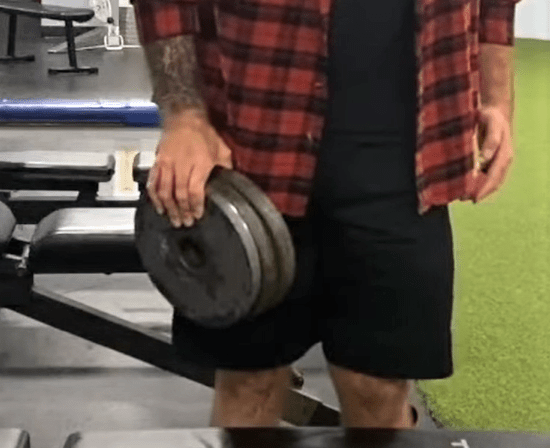
Hold for as long as you can, either standing or walking, rest for a minute and go again. Do three or four such “pinch sets” for each hand, together or individually, at the end of each forearm workout. If you can pinch grip the plates for more than one minute, use heavier plates. You can also pinch grip a dumbbell by the handle, keeping your fingers and thumb straight, or by the weight on one side with the dumbbell held vertical and your fingers and thumb splayed.
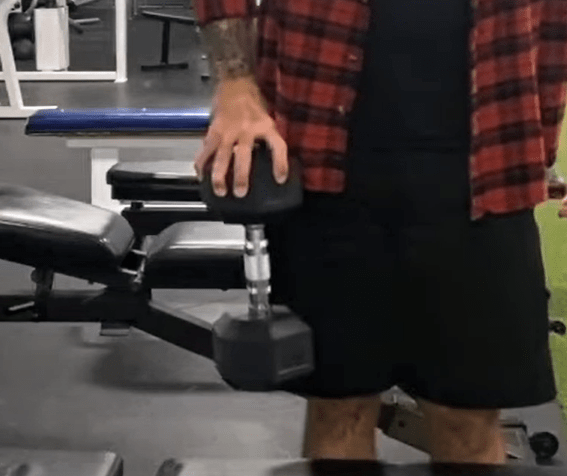
HANG GRIP
Another way to work your grip isometrically is to hang from an overhead bar.
✷ The easiest way to do this is to simply hang with both hands, using an overhand or underhand grip.
✷ If you can do this for a minute, as most people can, you’ll need to make it more difficult. The next step of difficulty is to hang with one hand and one finger of the other hand.
✷ The next step up in difficulty is the one-hand hang.
✷ About as difficult as a one-hand hang is a two-hand hang with a rope or (more difficult still) towel placed over the overhead bar, so you’re gripping both ends of the rope or towel.
✷ Most difficult of all is the one-hand hang with a towel.
✷ If you’re strong enough to hang for over a minute with one hand while gripping a towel, congrats. I’d shake your hand, but you might crush mine. But you can still up the resistance. Add weight to yourself via heavy chains around your neck or a weight belt around your waist.
FARMER’S WALK
The farmer’s walk is a strongman lift that works your grip along with a wide variety of muscles, including trapezius, spinal erectors, and glutes. There are farmer’s walk barbells with suitcase handles in the middle, but you can do farmer’s walks with dumbbells or kettlebells. The key is they need to be heavy. So pick up a heavy weight in each hand. Then, while keeping yourself and the the weights stable, walk. It’s as simple as that, but it’s a great overall exercise that will test and work your grip. Aim for 10 steps one direction and 10 steps back or 30 seconds.
GRIP STRENGTH TOOLS
There are several tools designed specifically to boost your grip strength and endurance. Here’s four you may want to use.
HAND GRIPPER
This spring device has two knurled handles configured in a V-shape which you squeeze together. If you’re only familiar with the plastic sort that you could easily shut, welcome to the new millennium. Captains of Crush grippers have revolutionized grip training. They come in 11 gradations from 60 lbs. (27 kg) of pressure to 365 lbs. (166 kg). Most weight-trainers can’t close the No. 1 (140-pound) gripper, and, at present, only five men have officially ever closed a No. 4 (365-pound) Captains of Crush gripper.
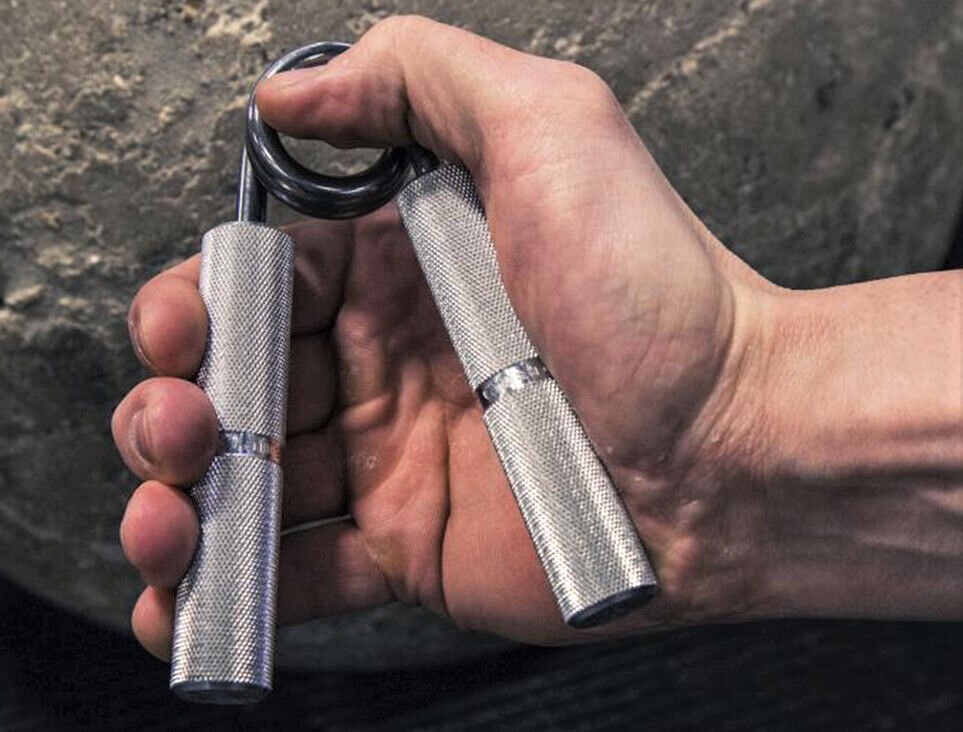
PLATE-LOADED GRIPPER
Some gyms have a machine that you can load with weight plates and draw the two bars together by squeezing your fingers and thumbs towards each other. Unlike a spring device, with a plate-loaded gripper, you can effectively work both hands at once and add small gradations of weight.
THICK BAR & THICK GRIPS
A regular barbell or dumbbell handle is one inch or one and 1/16 inch in diameter, while a thick barbell or dumbbell handle is two to three inches in diameter and often has no knurling. Thick grips, like the popular Fat Gripz, slip over a regular barbell, dumbbell, overhead bar, or any attachable bar and thicken the grip (the most popular size is 2.25 inches or 5.7 cm). In some exercises, such as curls or pushdowns, this may just provide a more comfortable grip (especially if you have big hands). But in others, your hands have to work a lot harder just to hold on. Thick bars or grips will make exercises like the farmer’s walk, deadlift, or hang grip more difficult, boosting your gripping endurance. You can also work your hands with your forearms by using a thick bar or grips during reverse curls.
LIFTING STRAPS
Finally, let’s turn to a different kind of grip strength tool. Unlike thick bars and grips, this one doesn’t make it harder to hold on and won’t strengthen your hands. Lifting straps are a grip aid, not a grip trainer. The easiest and most efficient way to secure a better grip during pulling exercises is to use training straps, noosing the hooped ends around your wrists and wrapping the tail ends around the bar where you hold. One study demonstrated that subjects get at least 10% more reps on back exercises when using straps as opposed to using no straps. Don’t shortchange your sets of rows, pulldowns, and pullups. The Barbell recommends you use training straps during back and traps workouts, and consider it a plus that your hands aren’t toiling to their utmost. Focus on grip strength at another workout time, not during your upper back routine.
For much more on straps, check out How To Use Lifting Straps: Ultimate Guide
HOLD ON
Gripping strength and endurance isn’t visible. Even formidable forearm size doesn’t necessary correlate to a walnut-crushing hold. Still, getting a good grip is crucial to weight-training success, just as it is in many other recreational pursuits. It can make the difference between a productive set and one that fails prematurely. If your hold is a weak link, train your hands as hard as you do any other bodypart. And everyone can benefit from occasional “handiwork” to make sure their grip doesn’t slip.
Related content:



































